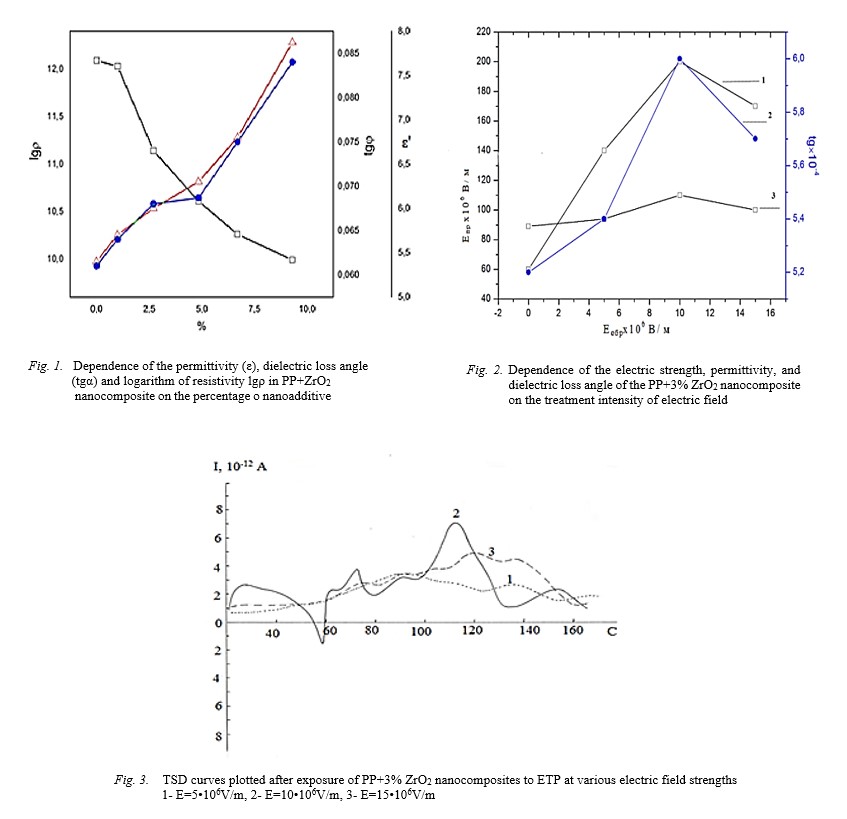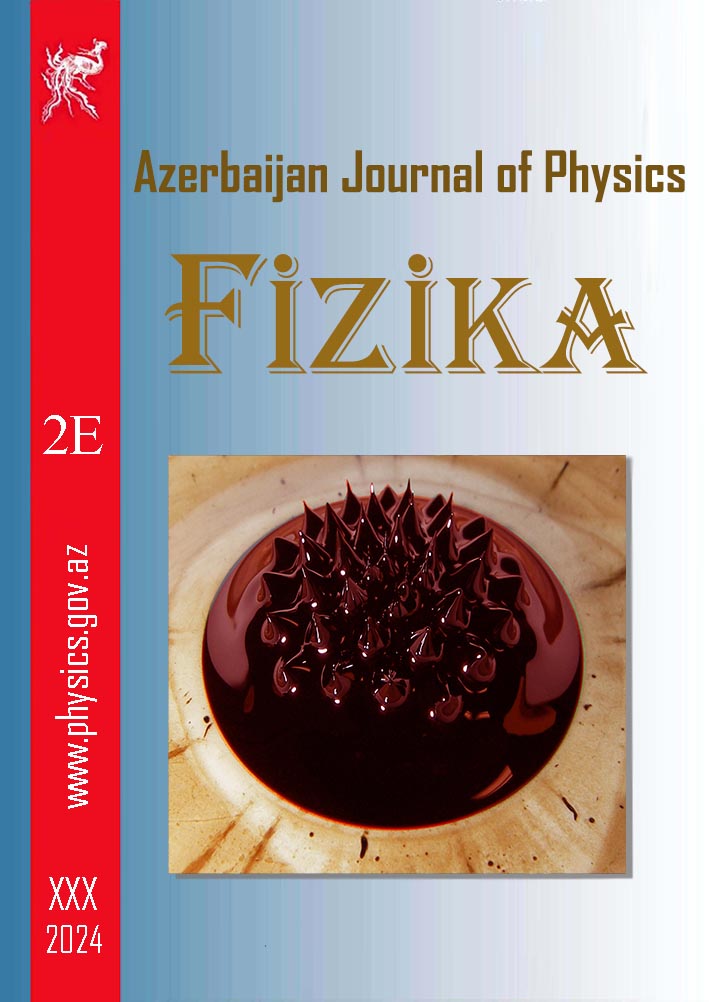ABSTRACT
The presented scientific article discusses the changes taking place in isotactic propylene and metal nanoadditive nanocomposite before and after exposure to ETP. Depending
on the percentage of the metal nanoadditive in the PP+ZrO2 nanocomposite, the permittivity (ε), dielectric loss angle (tgα), and logarithm of resistivity (lgρ)
are observed. The obtained dependence is explained by the high permittivity of the nanoadditive incorporated into the polymer matrix. Also, the incorporation of the
nanoadditive leads to the formation of structural defects and, as a consequence, an increase in electrical conductivity and a decrease in strength. The change in the
dielectric properties of the PP+3% ZrO2 nanocomposite before and after electrothermopolarization was determined at a constant electric field strength. TSD curves have been
plotted that characterize the electret state at various values of the electric field, and the parameters of the electret state have been calculated from these curves.
Keywords: nanocomposites, polypropylene, electrothermal polarization, mechanical and electrical strength, thermally stimulated depolarization curren.
PACS: 61.46.w,82.35:Np,71.38.k
DOI:-
Received: 09.01.2023
AUTHORS & AFFILIATIONS
Institute of Physics, Ministry of Science and Education
E-mail: hicran90@rambler.ru
Graphics and Images

Fig.1-2-3
|
REFERENCIES
[1] N.C. Angastiniotis, S. Christopoulos, K.C. Petallidou et al. Controlling the optical properties of nanostructured oxide based polymer flms Scientific Reports Vol 11, Article number: 16009 (2021).
[2] A.E, Hend, A.H. Maroof, A.N. Nadra et al. Development of natural polymer/metal oxide nanocomposite reinforced with graphene oxide for optoelectronic applications. NRIAG Astronomy and Geophysics J 2020, Vol. 10, № 1, 10–22.
[3] N.T. Kahramanov et al. Nanostructuralized composites and polymer material science, Plastic Masses 1–2, 49 (2016).
[4] R.N. Yastrebinski, P.V. Matyuxin, Y. Samoilova. Use of heavy metal oxides for synthesis of radiation protective materials International journal of applied and fundamental research– 2015. – № 12(2), p 1199-1202.
[5] M.A. Ramazanov, F.V. Hajiyeva, A.M. Maharramov and U.A. Hasanova. Effect of corona discharge on the structure and photoluminescence properties of nanocomposites based on polypropylene (PP) and zirconium dioxide (ZrO2) nanoparticles J. Ferroelectrics 2017, Vol. 507, 1–6.
[6] T.S. Sazanova, I.V. Vorotyntsev,V.B. Kulikov, I.M. Davletbaeva, I.I. Zaripo. AFM Study of Hybrid Polymeric Membranes: Surface Topographical Analysis and Estimation of Pore Size Distribution Membranes and Membrane Technologies 2016, V. 6, № 2, p. 166–175.
[7] М.А. Ramazanov, H.S. Ibrahimova, H.A. Shirinova. Influence of temperature-time crystallization conditions on PP+ZrO2 charge state and electret properties. J ferroelectrics 577,1 pp 153-160.
[8] A. Rychkov D. Rychkov. Electret properties of polyethylene and polytetrafluoroethylene films with chemically modified surface IEEE Transactions on Dielectrics and Electrical Insulation Vol. 18, № 1; 2011p 8-14.
[9] M.A. Umarov, I.N. Ganiev. Temperature dependence of heat capacity and change in thermodynamic functions of lead grade c2. Journal of Mechanical Engineering and Mechanical Engineering 2018, 23-28.
[10] A.M. Magerramov, M.A. Nuriyev and F.A. Akhmed. Peculiarities of composite charge states of metal polypropylene-oxides. Physics and chemistry of material treatment, № 1, pp. 57–60, 2013.
[11] H.S. Aliyev. Features of forming volume discharges in polymer dielectrics under the influence of electric discharges Azerbaijan journal of physics 2019, v.25 № 4 p.15-19.
|
